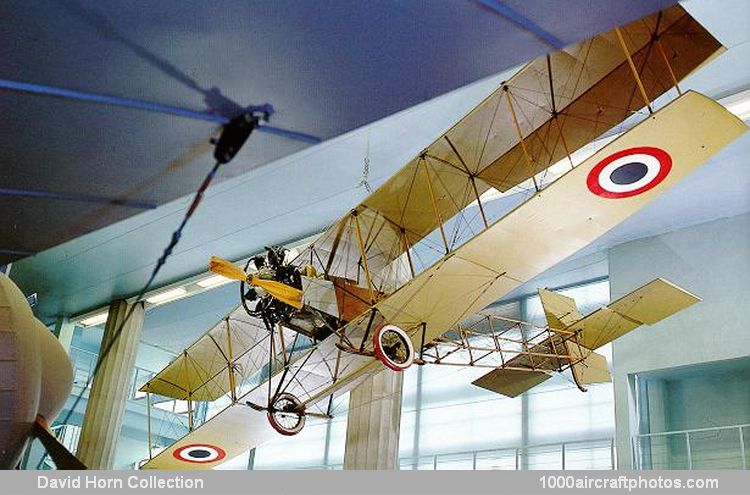03/31/2015. Remarks by Johan Visschedijk: "Emile Paumier is one of the few pre-WW I French homebuilders whose work survives, his second and last aircraft was donated to the museum at Le Bourget. His first machine was built at Lemerle, rue Croix Nivert, Paris, not far from the airfield at Issy, to which it was driven at the end of 1910.
The long square fuselage was uncovered and untapered at the tail, and was set slightly above the lower wing. A small flat twin was mounted in a short nose; the tail surfaces were all large rectangles mounted on top of the fuselage with elevators at the tips of the tail plane. The rectangular wings were set at a high angle of attack and had large hanging ailerons. A pair of main wheels were supported by a maze of struts, and short skids protruded forward. Paumier and his mechanic Hebert modified the aeroplane a few weeks after its appearance, probably at Heritier's workshop: the nose was lengthened and the engine increased from a 20 hp flat twin Dutheil et Chalmers to 50 hp Anzani, the top wings were lengthened and the angle of attack reduced. Further changes included the use of an even larger engine, an 80 hp Anzani.
The second Paumier was introduced as No 2, but often referred to as No 3; it had the same fuselage with an even larger engine, an 100 hp ten-cylinder Anzani, and a second rudder fitted below the tail plane. New and longer equal-span wings with high aspect-ratio were built. Paumier was assigned to Mourmelon for his military service in 1912, and was allowed to fly his biplane, provided cocardes were painted under the wings. In 1914 the Army commandeered the motor, and the aircraft never flew again, finally to be donated to the museum. Paumier began homebuilding again in the late 1950s."
